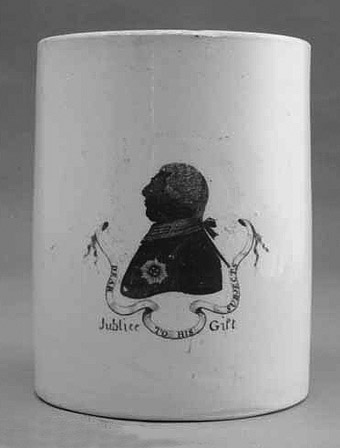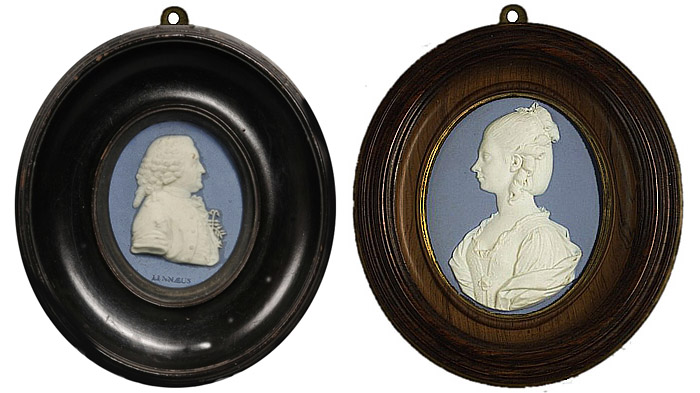Silhouette methods - painted on porcelain
Painting silhouettes on porcelain was far more popular in continental Europe than Britain. The German Furstenberg and Meissen factories were famous for their porcelain and enamel tableware decorated with the profiles of continental royal families.
 The majority of existent British pieces come from George III’s golden jubilee in 1809, but even these appear to have been produced in small amounts, and the quality of the work is often not of the first rate. The relative unpopularity of silhouettes on china and porcelain in the UK has puzzled modern scholars.
The majority of existent British pieces come from George III’s golden jubilee in 1809, but even these appear to have been produced in small amounts, and the quality of the work is often not of the first rate. The relative unpopularity of silhouettes on china and porcelain in the UK has puzzled modern scholars.
Some suggest that manufactures were reluctant to put such a ‘cheap’ art form on their product and this may, indeed, be a part of the explanation. Others have argued that the popularity of Wedgewood’s white on blue (also made in other colours) portrait medallions effectively destroyed the market for traditional black on white silhouettes.
Above, right, photograph of a creamware mug made to commemorate the Jubilee of George III.
Below, a photograph of two Wedgwood & Bentley Solid Blue Portrait Medallions, showing the Young Queen Charlotte, c.1779, and Linnaeus.

